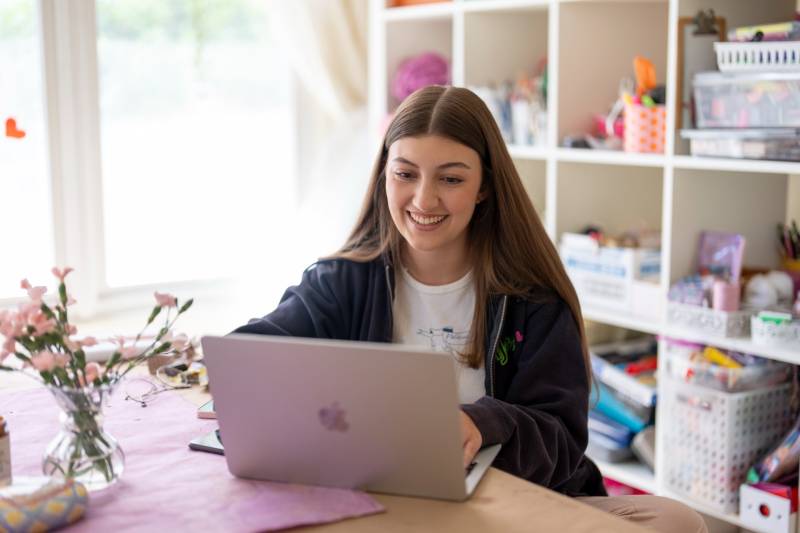“I’m tracking everything that I’m spending. I’m writing it all down,” said Wadsworth, who also writes down the times she wants to buy something but doesn’t. She reviews the entries at the end of the month to determine if her purchases were really necessary purchases or a response to a quick craving.
Mia Westrap, a PhD student from Southampton, England, also uses TikTok as a way to keep herself accountable during her no-buy year. Her goal is to save three months’ worth of rent since she currently lives month-to-month. While Berman’s Achilles’ heel was fashion items, Westrap’s was food and beverages.
“I figured out that I was spending four figures on just carbonated drinks and Pepsi Max,” she said.
Since social activities like going out for dinner or drinks involve spending money, Westrap decided to put a pause on dating during her yearlong no-buy challenge.
“I don’t want to turn up to a date and expect them to pay for me,” she said. “And I also don’t want to get up to date and meet someone and be, ‘Oh look, I make these TikToks about not spending any money, and here I am,’”
Other no-spend participants give themselves some latitude. Wadsworth, for example, does not buy any physical items but does allow herself to occasionally eat out with friends and pay the cost of visiting her long-distance boyfriend.
Sabrina Pare, 31, of Detroit, Michigan, approached cutting back on purchases from an environmental perspective. A sustainable living aficionado with a large social media following, Pare decided to participate in the no-buy year as a way to limit her contribution to the world’s waste.
She began by decluttering her closet and then looked for environmentally friendly ways to build a minimalist wardrobe, like hosting a clothing swap and avoiding fashion trends. At every step, Pare brings her followers along by filming short videos and sharing tips.
“If you’re buying less, it’s better for the planet. Overconsumption, it’s such an issue in our society,” she said.
But just as social media can be used for accountability and support when participating in the no-buy year challenge, it’s also one of the reasons many overspend. Berman, for example, stopped following a lot of fashion influencers to reduce the urge to buy things.
Learning to avoid impulsive shopping takes rethinking your habits and becoming aware of your triggers, said Carrie Rattle, CEO of Behavioral Cents, a financial coaching company.
“(The challenge) does help you try to push back against that need for dopamine. Every time we shop, any of us shop, we get that little dopamine hit,” Rattle said.
While the challenge is meant to last one year, people trying it say they are learning new techniques to help them avoid overspending in the future.
Westrap carries a bag big enough to hold something to read when she leaves her apartment so she won’t have an excuse to buy more books. Pare unsubscribed from newsletters that tempted her to buy clothes and skincare products. Berman dyed her hair back to its natural brown since salon appointments to keep the color bright blonde were costly.
“My consumer habits have changed so much through this,” Berman said. “Just because you see all the waste and you’re like, ‘Why is this necessary? Why buy a million little things when you can just buy one big thing, and it’s even better if it’s refillable.’”
After she makes a significant dent in the credit card debt, Berman hopes to start saving and investing. Wadsworth plans to focus on spending her money on experiences with her loved ones rather than material things. Pare hopes to pay off her student loans.
Wadsworth advises anyone who hears of the no-buy challenge and can’t imagine doing one to give it a try, even if it’s just for a month.
“They say that it sounds so hard, and yeah, it sounded hard to me, too. But if it sounds so terrifying to you, it probably means that you need it,” she said.
___
